For the past couple of years, Bill and I have been experimenting with some historic photographic printing techniques. So far my favorites are cyanotypes and kallitypes. For both processes, you apply a mix of chemicals to paper, put a negative over the paper, expose them with UV light and then develop them in either water or a chemical mixture.
Cyanotyping is the process developed in the 1840s that results in photographs in shades of blue. Sir John Hershel discovered the process in 1842 as a way to duplicate notes and diagrams. For decades, architects used the process Hershel developed to print blueprints. Within a year of Hershel discovery of the process, Anna Atkins created the first photograms by laying plants over sheets of treated paper. She published the first book of photographs, Photographs of British Algae: Cyanotype Impressions in 1843. Once 19th-century photographers started using large format negatives, it became fairly easy to print multiple copies of photographs as cyanotypes. These days, photographers can transform and print their images as digital negatives to make cyanotypes.
Here are a few of my photographs printed as cyanotypes. Some of my favorite photographs to print as cyanotypes are ones I’ve taken in cemeteries.
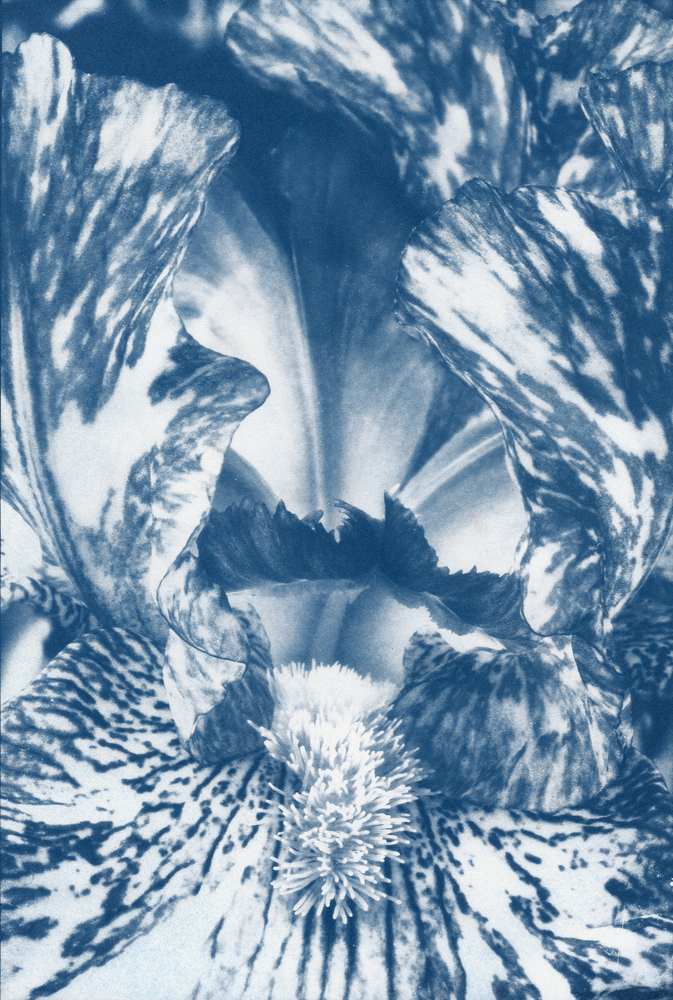
Purple Streaker Iris Cyanotype © 2017 Patty Hankins
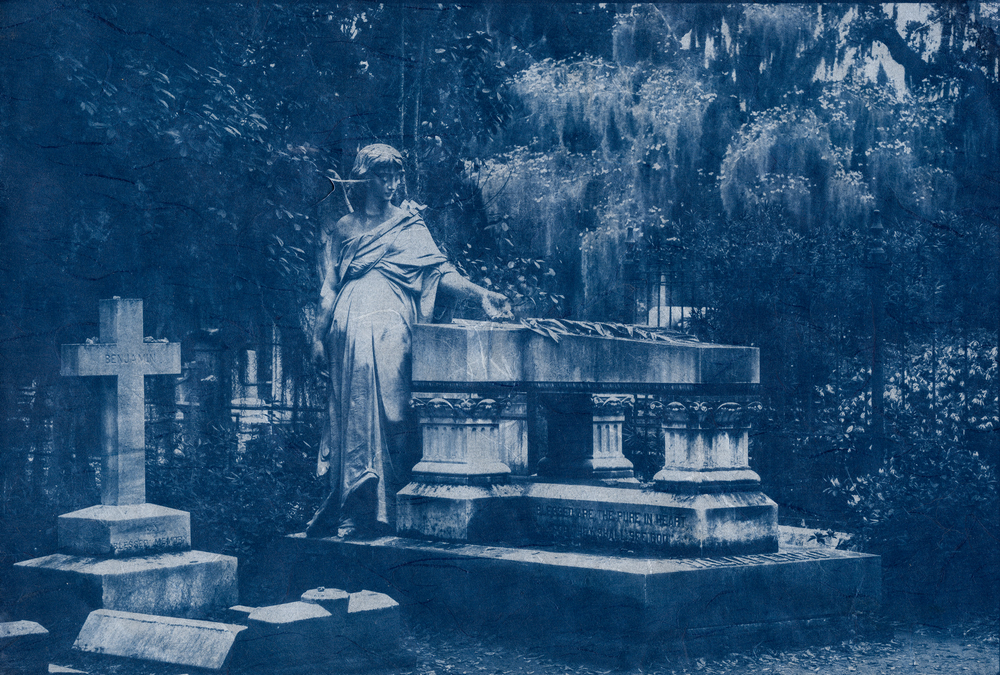
Graveyard Angel Cyanotype © 2017 Patty Hankins

In the Cemetery Cyanotype © 2017 Patty Hankins
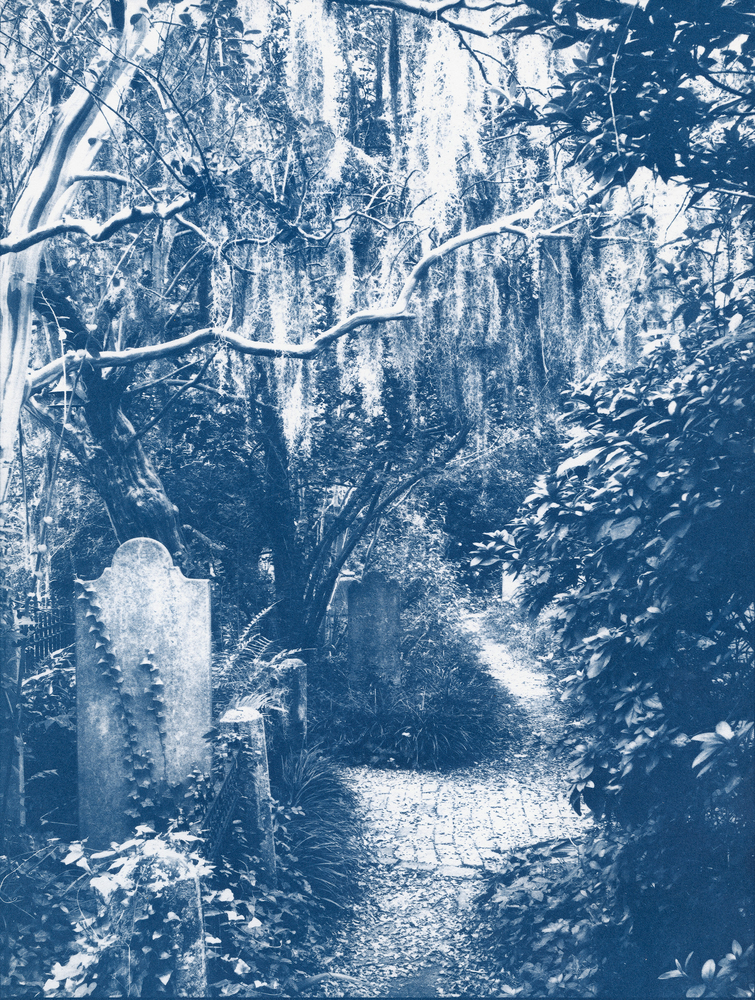
In the Cemetery Cyanotype © 2017 Patty Hankins
I’m also experimenting with creating graphic designs that I can print as cyanotypes. Here’s an image that started as a label on a wine bottled that I manipulated in Photoshop and then printed as a cyanotype.
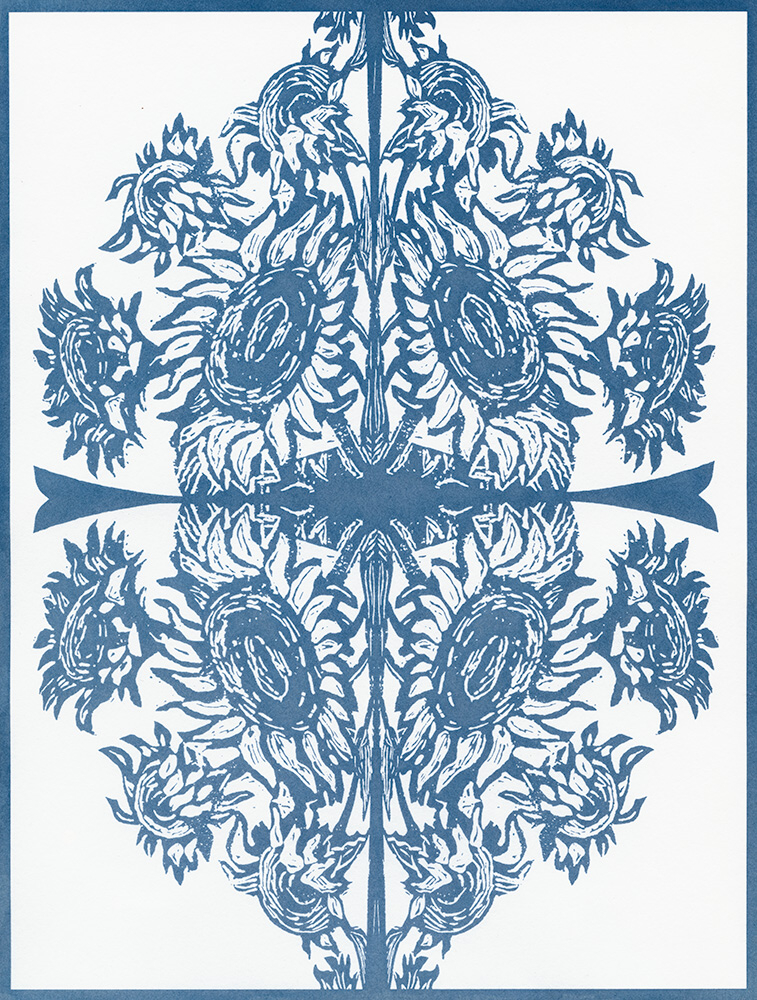
Sunflower Graphic Cyanotype © 2017 Patty Hankins
Cyanotyping is one of the easiest historic photographic printing processes to learn. The chemicals (ammonium iron(III) citrate and potassium ferricyanide) used to treat the paper are very safe to use. And you literally develop cyanotypes in water.
If you’d like to learn more about cyanotyping, Bill and I will be teaching an Introduction to Cyanotyping on August 26. We’ll provide all the supplies and tools you need, all you’ll need to bring is a couple of digital image files and a sense of fun.
You can learn more about our Introduction to Cyanotyping workshop on my website at http://beautifulflowerpictures.com/introduction-to-cyanotyping/
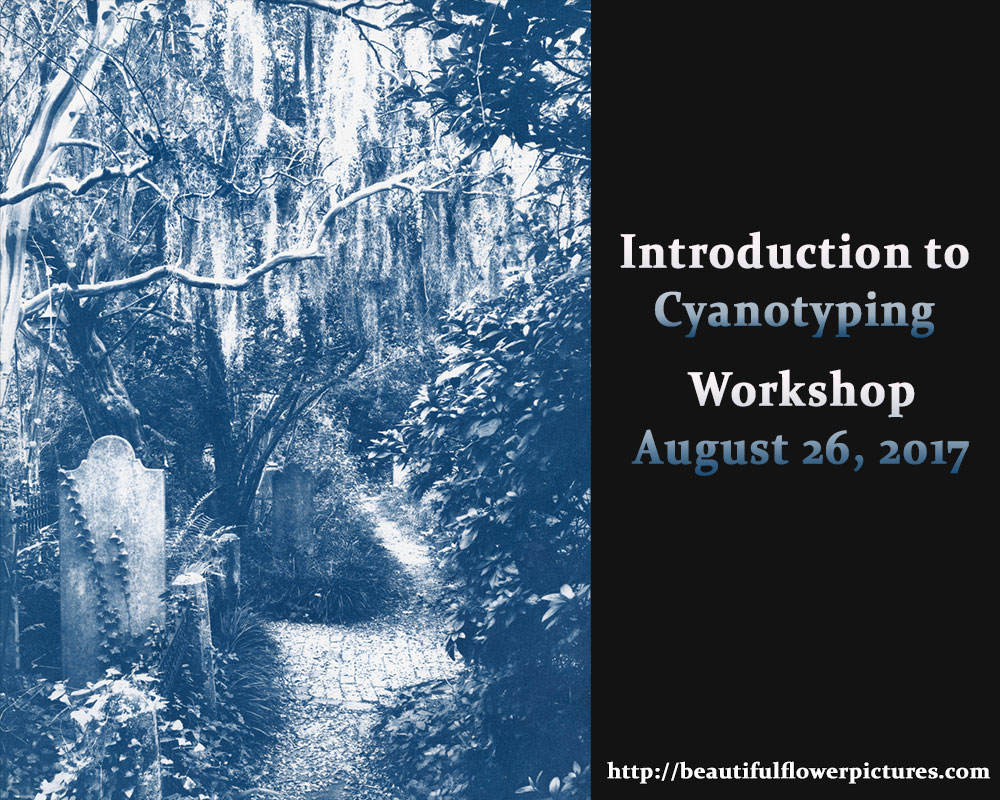
We’d love to have you join us for the workshop.
